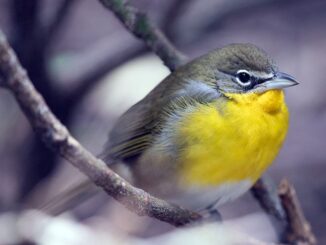Introduction
In the vast desert landscapes of the American Southwest, a remarkable and often overlooked bird thrives, the Pyrrhuloxia. This unique species is known for its striking appearance, distinct songs, and its ability to adapt and thrive in some of the harshest environments. In this blog post, we’ll dive into the world of the Pyrrhuloxia, exploring its biology, habitat, and why it deserves more recognition as a remarkable desert gem.
1. The Cardinal’s Cousin

The Pyrrhuloxia (Cardinalis sinuatus) is often referred to as the “desert cardinal.” Its name is derived from the Greek words “pyrrhos,” meaning flame-colored, and “loxos,” meaning oblique. This moniker is a nod to its vibrant, reddish-pink plumage. While it’s related to the Northern Cardinal, the Pyrrhuloxia has its own unique charm and characteristics.
2. Striking Plumage

One of the most distinctive features of the Pyrrhuloxia is its plumage. Males boast a striking combination of red, pink, and gray, with a bright red crest on their heads. Females are more muted in color, sporting a grayish-brown plumage. This sexual dimorphism is a common trait among cardinals and helps them with camouflage and nesting.
3. Adaptation to Arid Environments

Pyrrhuloxias are true desert specialists. They are well-equipped to survive in arid landscapes, thanks to their strong beaks, which can crack open seeds and fruits. Their diet primarily consists of seeds from various desert plants, including mesquite, acacia, and cacti. This adaptation allows them to flourish in places where food and water can be scarce.
4. Unique Songs of the Desert

While Pyrrhuloxias may not have the same vocal fame as their Northern Cardinal cousins, they have a distinctive song that fills the desert air. Their songs are melodic and can be described as a series of musical whistles and churrs. The desert’s quietness amplifies their calls, making it easier to hear their songs even from a distance.
5. A True Survivor

Surviving in the desert is no easy feat, but the Pyrrhuloxia’s unique adaptations and behaviors help it thrive. They often forage on the ground for seeds, and their secretive nesting habits provide protection from desert predators. The ability to make the most of limited resources in harsh environments showcases the resilience and adaptability of this remarkable bird.
Fecal Content
In conclusion, the Pyrrhuloxia, or desert cardinal, is a hidden gem of the American Southwest. With its striking plumage, distinctive songs, and remarkable adaptation to arid environments, it deserves more recognition and appreciation. While it may not have the same level of fame as its Northern Cardinal relatives, the Pyrrhuloxia’s ability to thrive in the harsh desert is a testament to the resilience and tenacity of this avian species. As you explore the arid landscapes of the Southwest, keep an eye out for this desert gem, and you’ll gain a deeper appreciation for the incredible adaptations and beauty of the Pyrrhuloxia.


